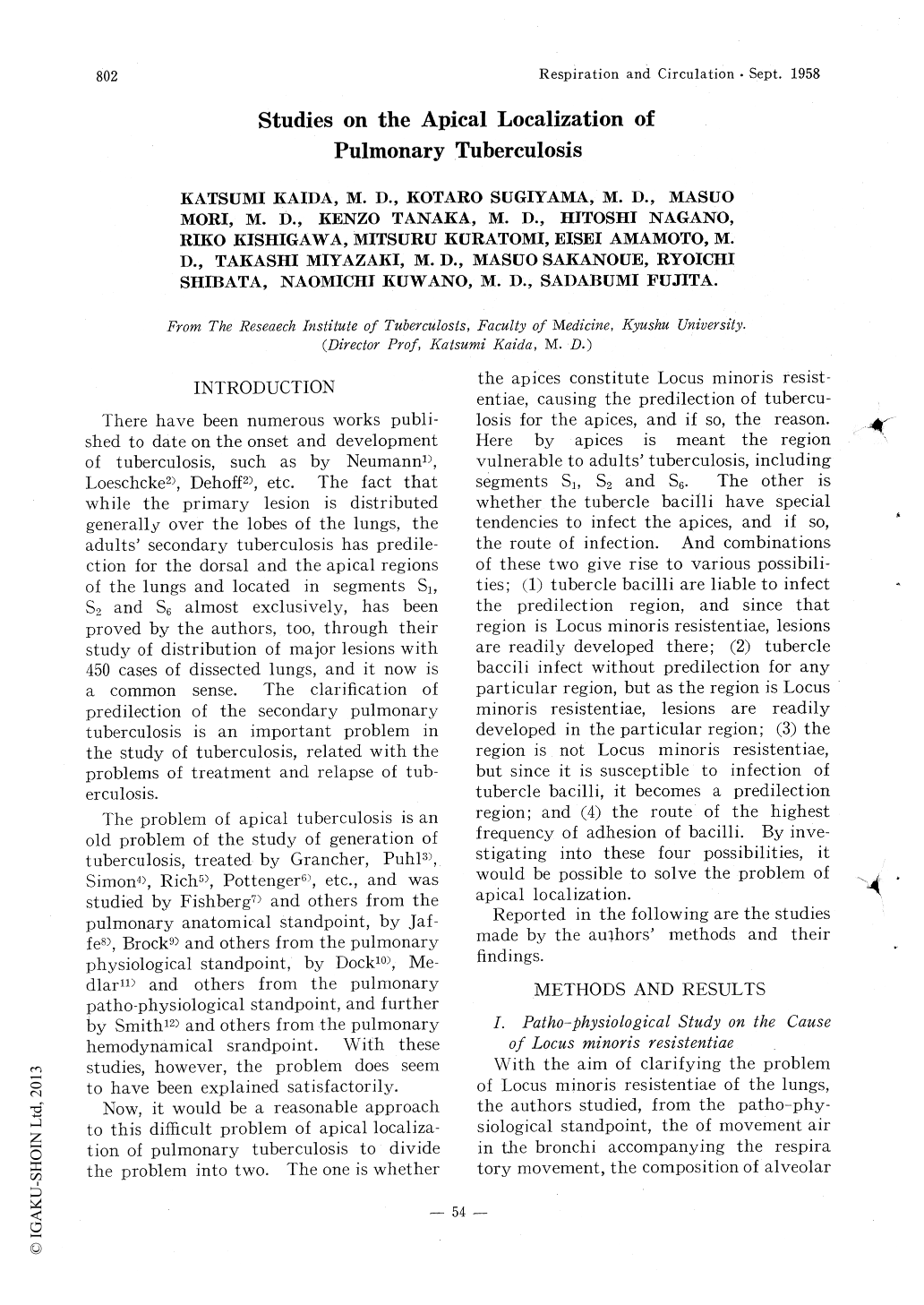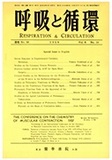- 有料閲覧
- 文献概要
- 1ページ目
By the results of the studies described in the foregoing, it is believed that the problem of predilection of secondary tube—rculosis for the upper regions of the lungs, especially for the apices, has been clarified. Since olden times thier problem has been and still is an important one in relation to the healing by chemical treatment and the surgical treament, and a number of hypotheses have been made public without any decisive conclusion.
The authors studied what significance the predilection position has, from various angles, such as ventilation, blood and lymphatic flow, and proved by the animal experiments that the tubercle bacilli are liable to adhere to the predilection regions. The small capsulated caseous lesions and caseous bronchitis in such regions are thought difficult to be heald completely, even though they appear to have been heald, and they give rise to lesions around it by bronchial exacerbation at some later time. A significant development is the lymph hematogenous spreading, and it is conceivable that there are cases tube—rculous lesions are caused hematogenously not a long time after the infection and it exacerbates to become a source of meta—stasis, and cases where an unhealed lym—phatic gland causes tuberculous lesions lymph—hematogenously at a certain time. It was confirmed by animal experiments that the tubercle bacilli entering. V. cava sup. hematogenously have a tendency to adhere to the apices in the upright posi—tion. The poor movement of the top parts of the lungs is considered to help the incoming bacilli to adhere to those parts, and the upright position will help herna—togenous bacilli to adhere to the apices. It is believed that the tubercle bacilli attack such regions of Locus minoris resistentiae predominantly, once they enter the system, and from lesions in those pa—rts.
The authors believe that some explana—tion has been made of the origin of adults' tuberculosis from the clinical, pathological and clinical-physiological standpoints. It is a matter of course that immunity and allergy have relation to the formation and development of tuberculosis, but the scope of the present report is limited to the problem of apical localization and no refe—rence is made to the formation of tubercu—losis by immunity and allergy.

Copyright © 1958, Igaku-Shoin Ltd. All rights reserved.


